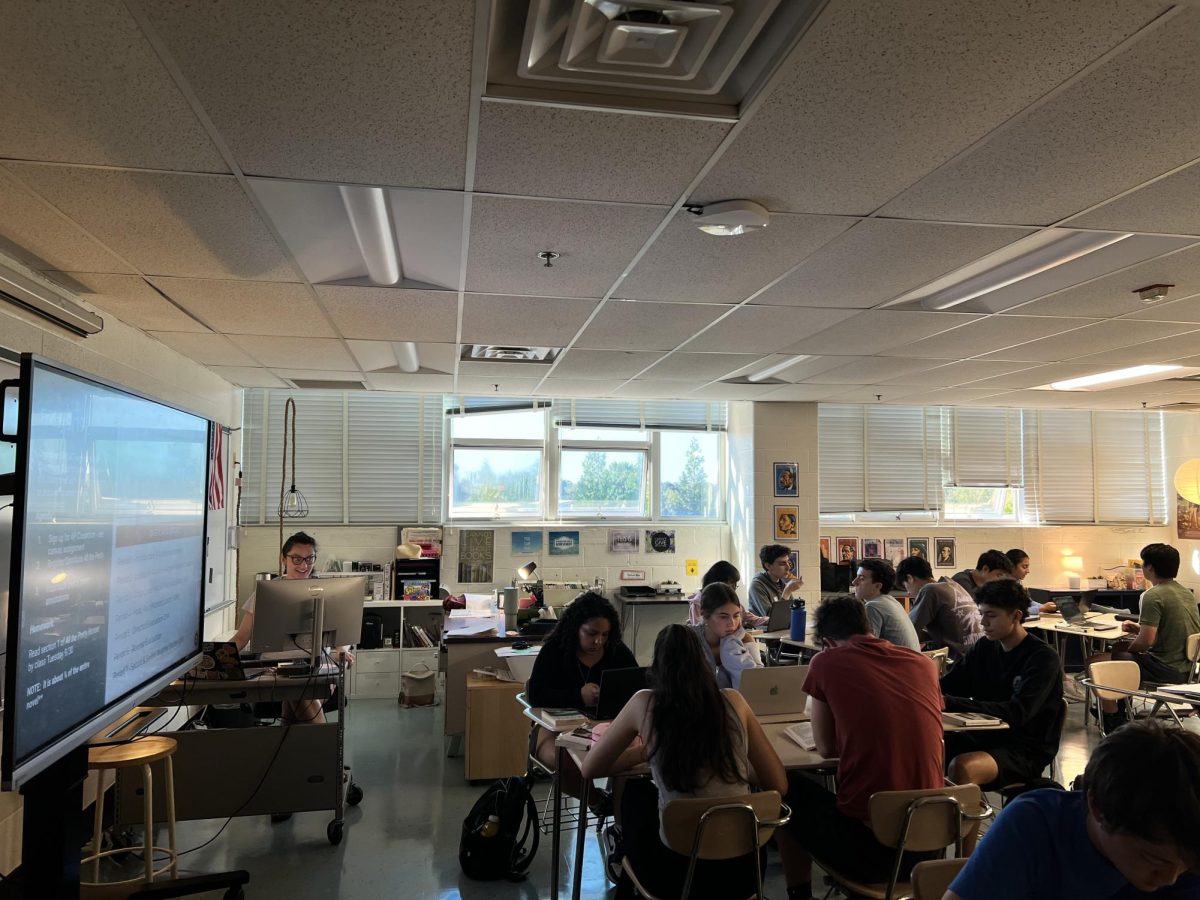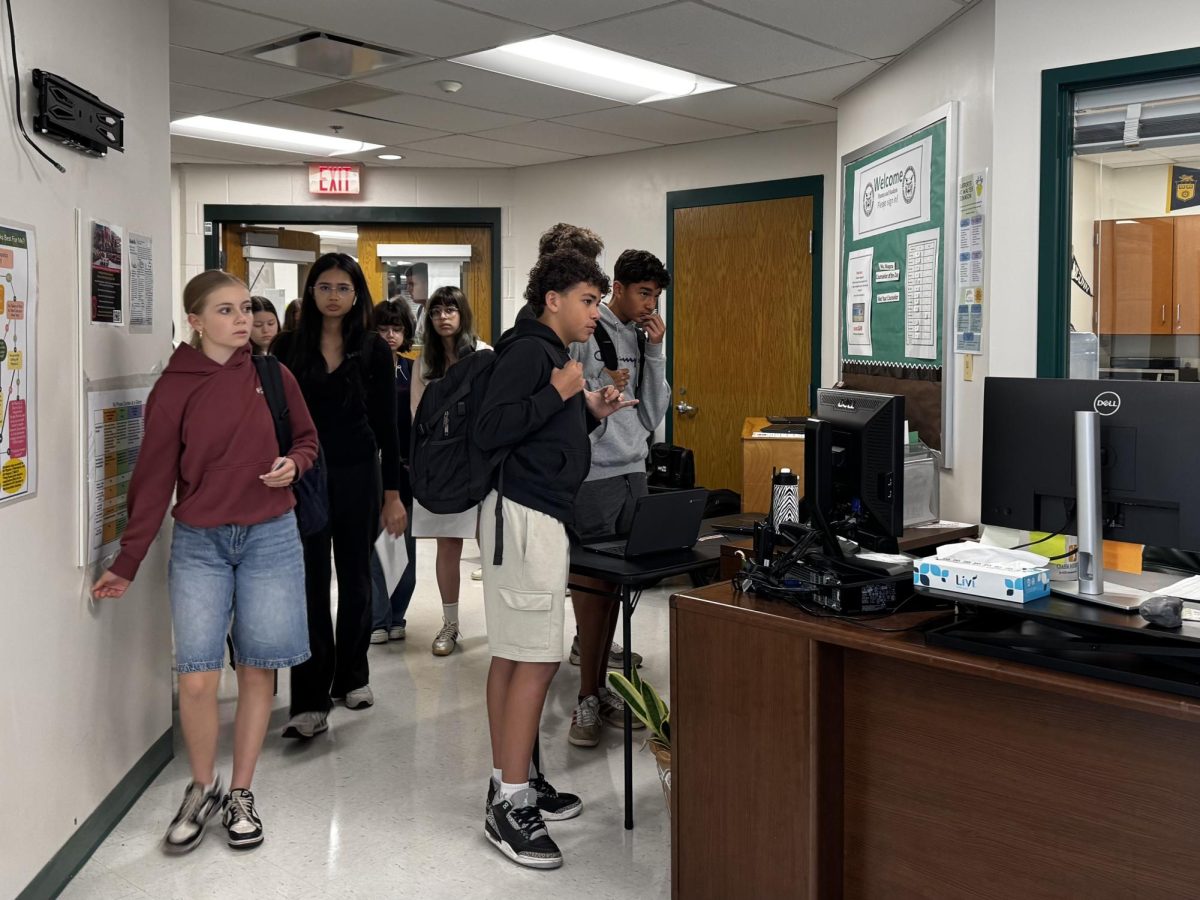Social studies teacher Tim Rodman’s team challenge games pit each of his classes’ table groups against each other in friendly competition. Each member of the winning table receives a gift card to a place of their table’s choosing. This incentivized version of classroom learning preaches collaboration and builds extra motivation. Mr. Rodman uses these table groups in his AP Microeconomics and AP Government classes.
Whether it’s collaborating on a graphing challenge, playing the “Golden Balls” game to learn about the idea of inefficient collusion or participating in a mock trial, Rodman’s students are never left without a challenge. A perfect example of the team-based learning approach in action can be seen as students work on warm-ups. Talking as a table group about a question that will relate to the day’s lesson allows all students to start class in a fun and productive way.
“The team-based approach to classroom learning, I believe, is a critical component to students’ collaboration. Students helping other students with class content, fill in missing information, expand on their discussions, hold online Q and As and eliminate barriers to learning in order to help all students grow,” Rodman said.
The excitement for this type of collaborative learning even extends to Rodman’s students. Students generally like working in groups rather than working alone.
“Whether it’s posting questions on edmodo, playing fun games in class, or helping my teammates with difficult concepts, I would confidently say that the incentive of points makes me work twice as hard as I usually would,” senior Andrew Hamill said.
Students thrive off a little friendly competition, and in room 110, they’re sure to get it, each and every day.














